There are so many unique homemade slime recipes out there to try, and a hot one right now is clay slime or butter slime. It has the smoothest, most buttery texture and is easy to make! Once you have mastered the basic slime recipe, a unique slime like this soft clay slime is a cinch!
HOW TO MAKE CLAY SLIME
BUTTER SLIME OR CLAY SLIME
Is clay slime butter slime? Yes, it’s the addition of clay to the basic slime recipe that makes for a fun butter slime. Read on to find out what clay to use and how to make clay slime step by step.
What’s cool about this slime? First, it stays nice and stretchy for a lot longer. Second, it’s a bit moldable. Third, it has a smooth, rich, and silky feeling texture!
Butter slime only requires one extra ingredient and can be made using any of our three basic slime recipes. I will tell you which is my favorite below because we experimented with all three of them to find out which makes the best butter slime!
The slime recipe you use depends on what slime activator you have. Do you have borax powder, liquid starch or saline solution?
Here we use saline solution to make our butter slime. Now if you don’t want to use saline solution, you can test out one of our other basic recipes using liquid starch or borax powder. We have tested all three recipes with equal success!
THE SCIENCE OF SLIME
We always like to include a bit of homemade slime science around here! Slime is an excellent chemistry demonstration, and kids love it too!
Mixtures, substances, polymers, cross-linking, states of matter, elasticity, and viscosity are just a few science concepts that can be explored with homemade slime!
How do you make slime? The borate ions in the slime activator (sodium borate, borax powder, or boric acid) mix with the PVA (polyvinyl acetate) glue and form this cool, stretchy substance. This is called cross-linking!
The glue is a polymer of long, repeating, and identical strands or molecules. These molecules with flow past one another and keep the glue liquid. Until…
You add the borate ions to the mixture, and it then starts to connect these long strands together. They begin to tangle and mix until the substance is less like the liquid you started with and thicker and rubbery like slime! Slime is a polymer.
Picture the difference between wet spaghetti and leftover spaghetti the next day. As the slime forms, the tangled molecule strands are much like a clump of spaghetti!
Is slime a liquid or solid?
Slime is called a Non-Newtonian fluid because it’s a bit of both! Experiment with making the slime more or less viscous with varying amounts of foam beads. Can you change the density?
HOW TO ADD CLAY TO SLIME
Note: If you want to make a butter slime but don’t have clay… look at our Butter Slime without Clay recipe!
Once you have made your slime, it’s time to mix in the clay to make that smooth butter slime!
Can you use any clay for slime? There are several types of clay you can use. We have chosen to use the Crayola Model Magic clay as it’s readily available.
The key is to use only so much, depending on how soft the clay is! The denser the clay, like our clay below, the less you want to use. A softer clay will require you to use more. Feel free to experiment with the consistency you like the most.
We have experimented with two different amounts of the Crayola Model Magic clay and found that mixing 1/3 of a standard 4-ounce package worked nicely. The first time we used 1/2 a package. We ended up with a thicker slime, which was less stretchy.
MIXING YOUR CLAY SLIME TIPS
Get your muscles ready for this one! Mixing this will take a few minutes, so don’t get discouraged that it doesn’t happen immediately.
You might even think it won’t work initially, but keep kneading your slime, and it will come together for you!
We chose to start with yellow slime and add reddish-colored clay to it. We have also mixed blue and green and pink and orange! There are so many possibilities, including using black and white clay!
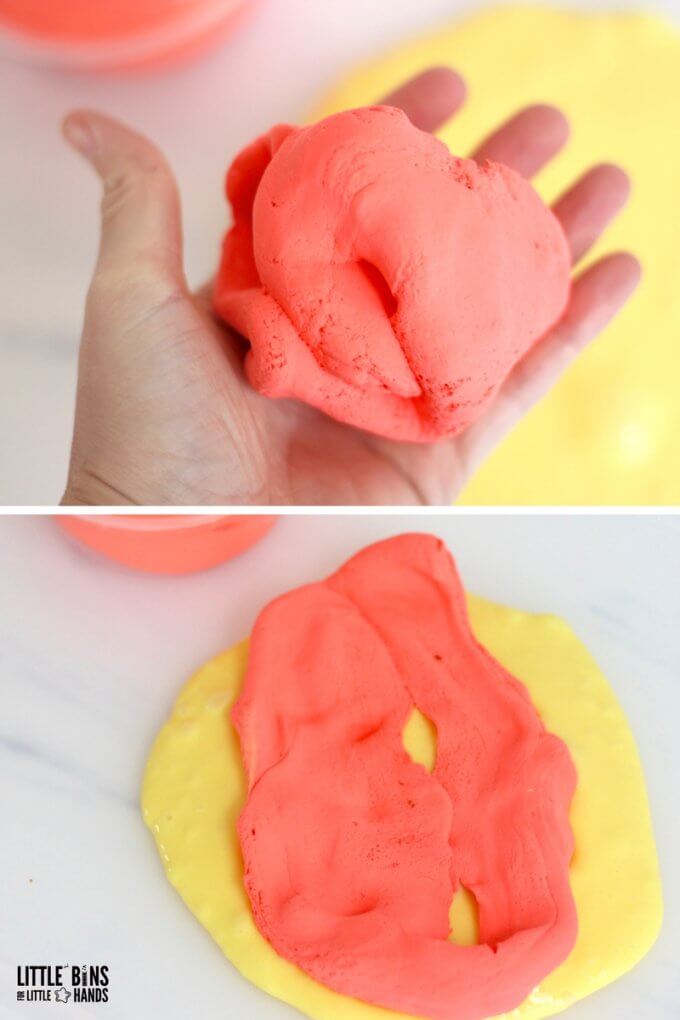
STEP 1. Start by softening up your clay.
STEP 2. Next, flatten it out, and put on top of your slime.
STEP 3. Then start folding and mixing and kneading and squishing. Remember it will come together and make one smooth color like you see in the last few photos.
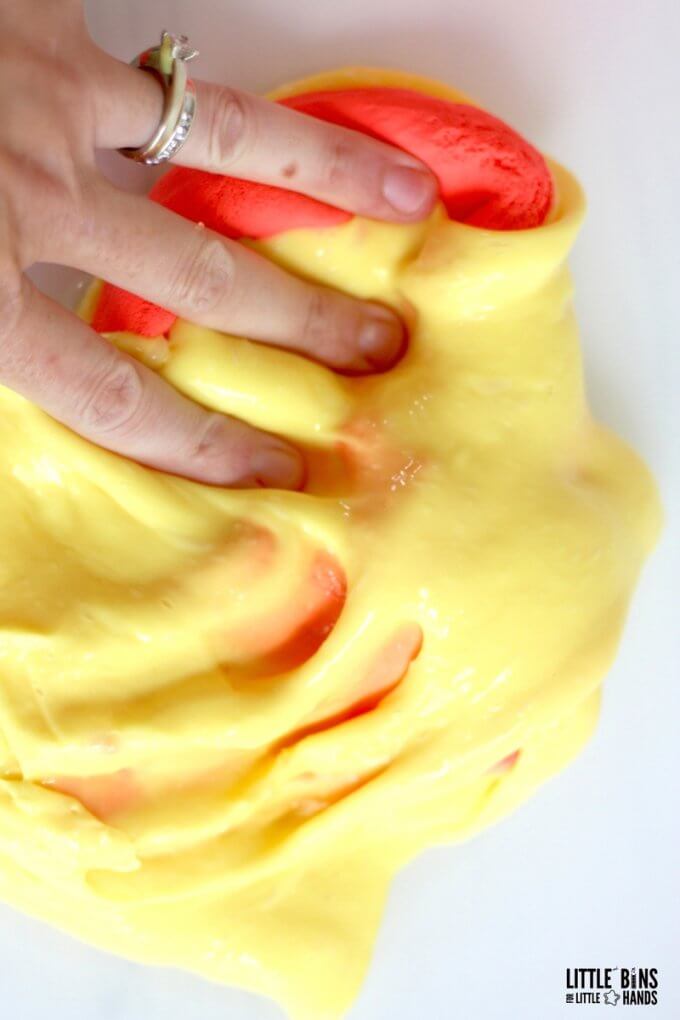
You did it! Your clay slime recipe is now ready to play with. We love making handprints in ours. Soft butter slime is so squishy and relaxing to play with too.
Printable Slime Recipe Guide

BUTTER SLIME RECIPE
SLIME INGREDIENTS:
- 1/2 cup of PVA White Glue
- 1/2 tsp baking soda
- Food coloring
- 2 oz of soft modeling clay
- 1 tbsp of saline solution
HOW TO MAKE BUTTER SLIME
STEP 1: Add 1/2 cup of PVA Glue to your bowl.
STEP 2: Mix the glue with a 1/2 cup of water.
STEP 3: Add food coloring as desired.
STEP 4: Stir in 1/2 tsp baking soda.
STEP 5: Mix in 1 tbsp saline solution and stir until slime forms and pulls away from sides of bowl.
This is exactly how much you will need with the Target Sensitive Eyes brand, but other brands may differ slightly!
If your slime still feels too sticky, you may need a few more drops of saline solution. As I mentioned above, start by squirting a few drops of the solution onto your hands and kneading your slime longer. You can always add but you can’t take away!
Check out our how to fix slime guide!
STEP 6: You can knead in your soft clay once your slime is made! This will take a few minutes and some good hand strengthening to get it all worked in well.
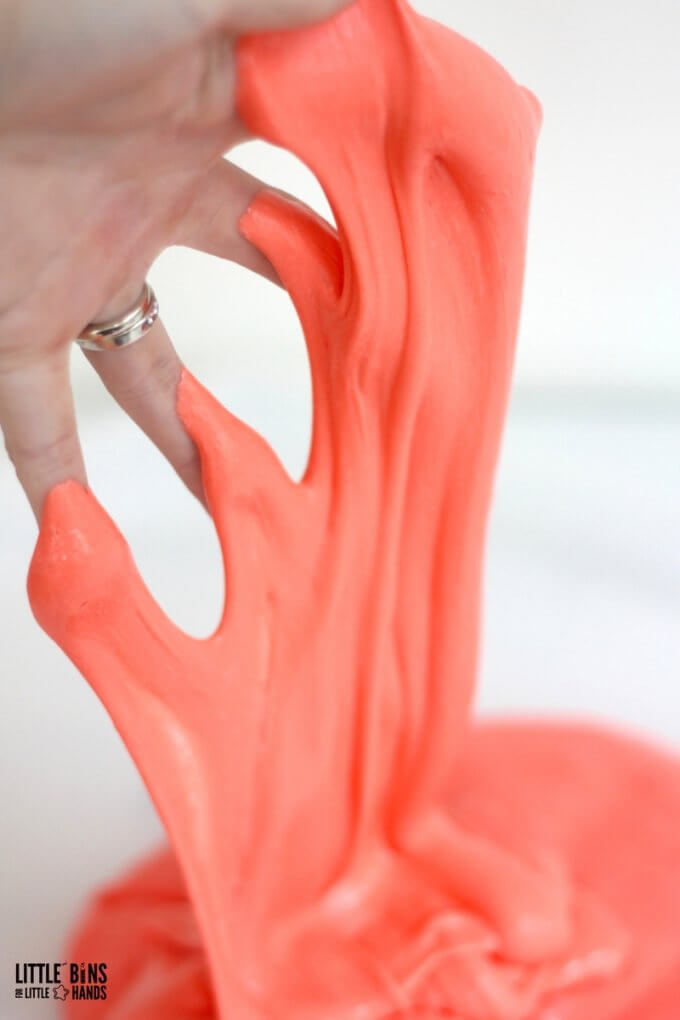
HOW DO YOU STORE SLIME?
I get a lot of questions regarding how I store my slime. We use reusable containers in either plastic or glass. Make sure to keep your slime clean, and it will last for several weeks. I love the deli-style containers listed in my recommended slime supplies list.
If you want to send kids home with some slime from a camp, party, or classroom project, I suggest reusable containers from the dollar store, grocery store, or even Amazon. We have used condiment containers and labels for large groups, as seen here.
We have the best resources to look through before, during, and after making your butter slime! Make sure to go back and read the slime science above too!
As I mentioned above, you can use any of our basic slime recipes for your butter slime, but we like to use our saline solution slime recipe with white washable PVA school glue.
More Cool Homemade Slime Recipes
Even the biggest slime-making fan will enjoy these homemade slime recipes and more!
Click on the image below or on the link for more awesome homemade slime recipes.
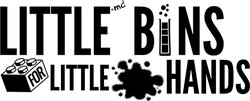

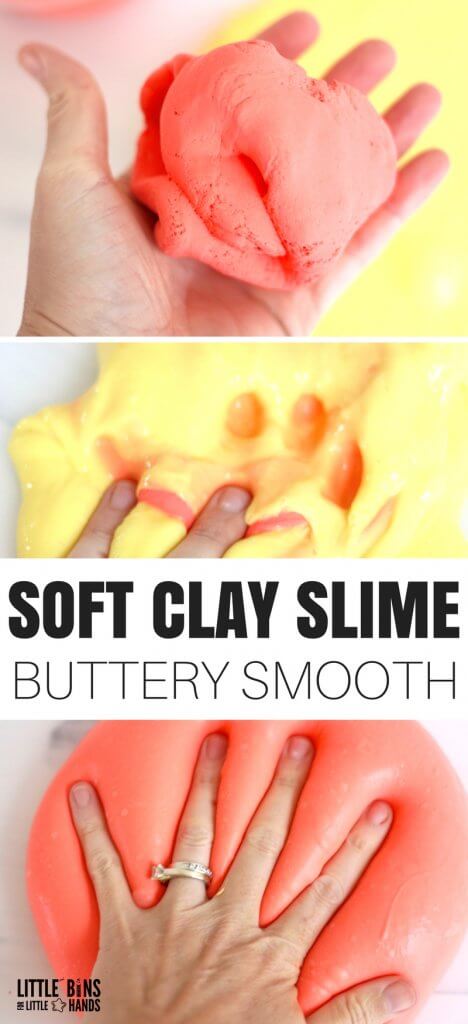
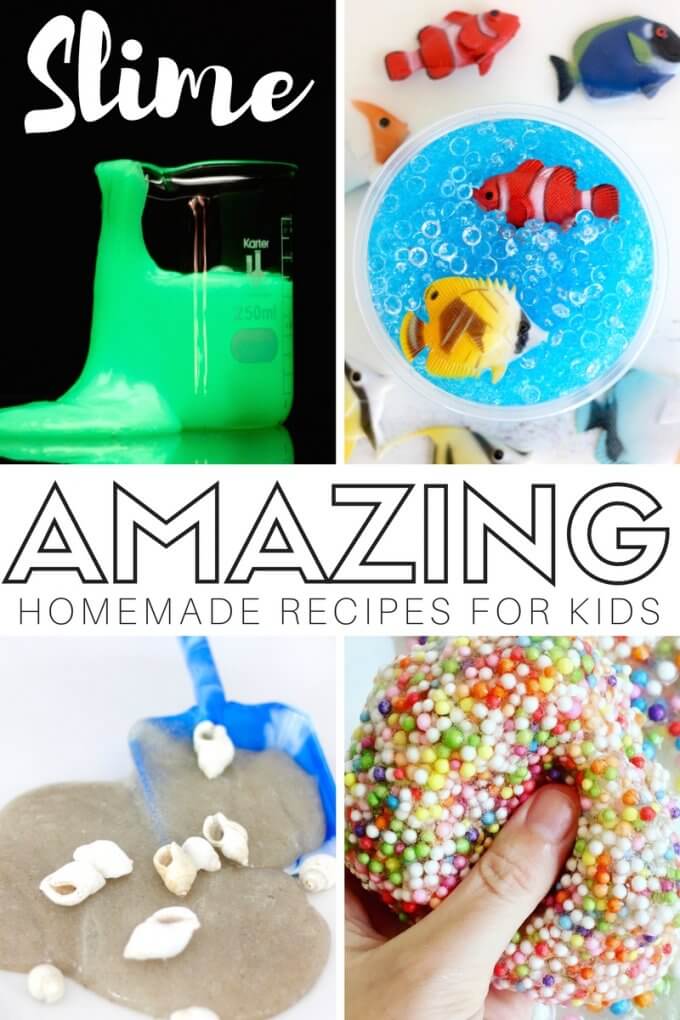
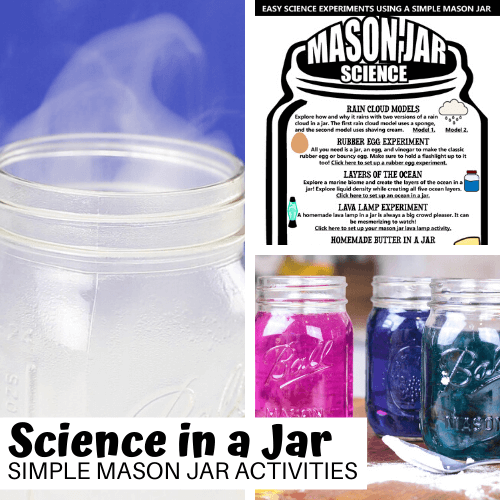

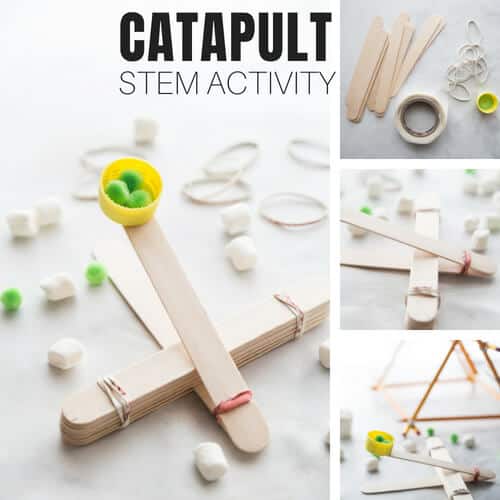
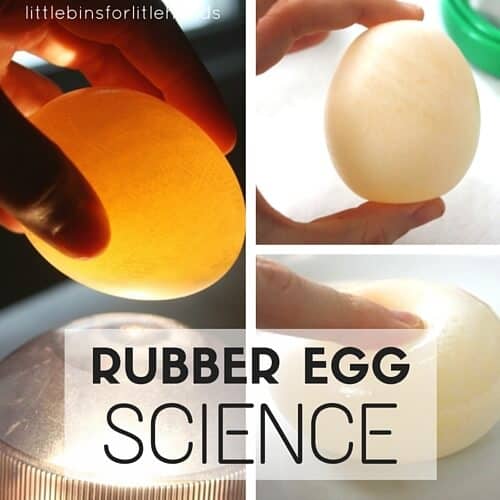
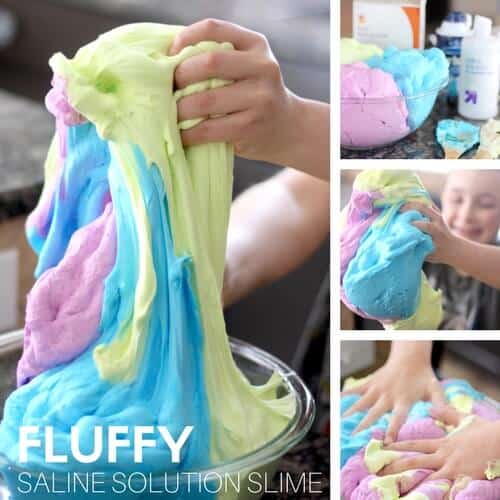

How do you make the butter slime more stretchy and less tough after it’s made?
HELLO! we love the soft clay butter slime recipe! We made it with your basic borax slime recipe (with 1/2 tsp borax:1/2 cup water) and a handful or more of daiso soft clay.
It was great to work with but after being in the container for a day or so it gets sticky /moist.
Do you have tips of what we can add to it, or better way to store it dont hat it stays fresh ?
What kind of container did you store it in? Did you use Elmers glue? I have not used the Daiso clay yet with the borax recipe. did you try re-kneading it? Feel free to email me [email protected]